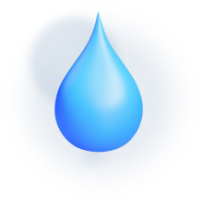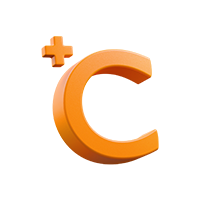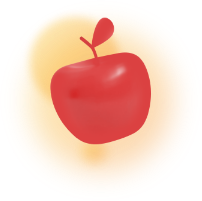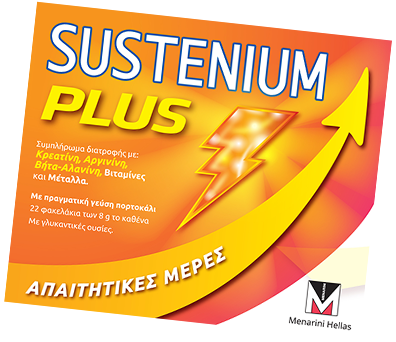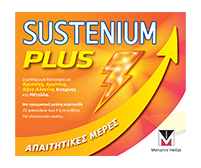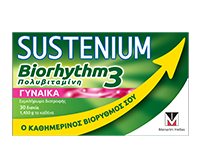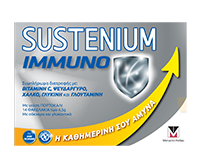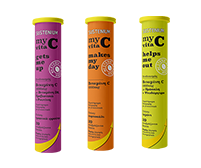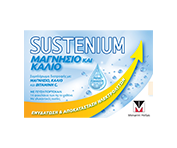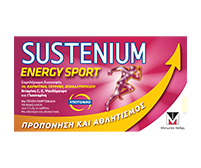Amino acids constitute the structural units of proteins, the fundamental “bricks” of every vegetal or animal cells. They are organic substances made up by atoms of carbon, hydrogen, oxygen, nitrogen and, sometimes, sulfur. They can be divided into two groups: essential, which have to be introduced with diet, and non essential which have to be synthesized by our body. Amino acids appearing in proteins of all living beings are 20 and are under genetic control, that is to say that the information about type or position of a specific amino acid inside a protein is codified in the DNA.
It is a precursor of carnosine, which is a substance present in muscles and in several types of meat; it is responsible for the energy-producing processes in the human body. Among its properties, it contributes in counteracting tiredness feeling by buffering the acidity due to lactic acid.
It is a water-soluble vitamin which is involved in the synthesis of fatty acids, the catabolism of branched-chain amino acids and gluconeogenesis. Meat, fish, poultry, egg, some cheeses and some vegetables are rich dietary sources of biotin.
Socially known as a “stimulating”, caffeine can be especially employed to help cognitive functions and physical performances in general. It is a fat-soluble molecule: 1, 3, 7-trimethylxanthine naturally present or added in several food sources. A moderate consumption, in healthy individuals without any contraindications, allows a controlled, reversible and positive stimulation of neuromuscular processes, metabolic and cognitive activities without major adverse effects for the body.
It is a component of the skeleton: approximately 99% of total body calcium is found in bones and teeth. The main dietary sources of calcium in European countries differ, although dairy products are generally the most important food group. Rich food sources of calcium include dairy products, dark green vegetables, legumes, nuts, fish with soft bones (e.g. canned sardines) and calcium-fortified foods.
It is synthesised primarily in the liver and kidneys from amino acids, lysine and methionine and required for the transport of fatty acids.
It contributes to many body functions including the maintenance of osmotic and acid–base balance, muscular and nervous activity, and the movement of water and solutes between fluid compartments.
It is an essential trace element which is ubiquitous in diet: meat and meat products, oils and fats, breads and cereals, fish, pulses and spices.
It naturally occurs and it is ubiquitous in nature; thus, it is also known as ubiquinone. Coenzyme Q10 (CoQ10) participates in several biological processes such as antioxidant activity. It can be synthesised by all tissues in the body, therefore we do not depend on diet for its supply.
It is an essential micronutrient required for several reactions, in fact it is involved in neurotransmitter synthesis and energy metabolism. The major food sources of copper are grains and grain-based products but also meat and meat products. Copper is absorbed by the intestine.
It is present in meat, milk, fish and it is almost exclusively concentrated in muscles. The body can take it from diet (beef, pork, herring, salmon cod, human and cow milk) and from endogenous synthesis. It enters in a very rapid energetic mechanism which is used by cells when we shift from a low to a high energy requirement. For example, in sport competitions. Do not take it during pregnancy or in children or for prolonged periods without medical advice.
It belongs to Omega-3 (n-3) polyunsaturated fatty acids (PUFAs). EPA, DHA and DPA are n-3 long-chain PUFAs (n-3 LCPUFA), of which fish is the major food source. Other natural sources are human milk, cultivated marine algae, marine mammals and krill.
Eleutherococcus is the common name for the root of the plant Eleutherococcus senticosus (Rupr. et Maxim.) Maxim. Eleutherococcus preparations can be obtained through several methods such as extractions by drying or by dissolution in solvents.
Folate belongs to the B vitamin group and can be naturally found in food whereas folic acid is the synthetic form of the vitamin. The major folate sources are dark green leafy vegetables, legumes, orange and grapefruit (juice), peanuts and almonds. Another rich source of folate is baker’s yeast.
It is an amino acid provided by mixed dietary protein intakes from different sources.
It is an amino acid primarily synthesised by kidneys and liver. Glycine acts as a precursor for several key molecules such as creatine and plays a role in supporting the health, the growth and well-being of humans and animals.
It is an essential nutrient required for correct functioning of the thyroid gland playing an important role in energy-yielding metabolism and growth. A iodine-poor diet might lead to a poor thyroid hormones production and low gland function. Iodine is absorbed through the intestine and stored in the thyroid. The richest iodine sources are marine products, eggs, milk, and food products derived from them, and iodised salt.
It is a natural element required for many biological processes among which oxygen transport through the bloodstream. Food sources with high iron concentrations are meat, fish, cereals, beans, nuts, egg yolks, dark green vegetables, potatoes and fortified foods. Iron is mainly absorbed in the intestine. If iron supply is not enough to meet physiological requirements, iron stores will be mobilised. However, once the stores are exhausted it might be possible to develop iron deficiency. Individuals with great iron requirements are children, pregnant women and women with high menstrual losses.
It is an alpha-amino acid present in foods from animal and vegetable origin and it is an amino acid provided by mixed dietary protein intakes. The L-form is the most common form found in nature.
It is a carotenoid: it has several beneficial effects, especially on eye health. Moreover, it is suggested to have positive effects on cognitive function.
It is an alkaline earth metal which is absorbed by the intestine and acts as cofactor of more than 300 enzymatic reactions. In particular, it plays an important role in neuromuscular and cardiovascular systems. Foods rich in magnesium are nuts, whole grains and grain products, fish and seafood, several vegetables, legumes, berries, banana and some coffee and cocoa beverage preparations.
It is an essential dietary element for mammals; its intestinal absorption is low and its elimination is primarily through faeces. Nuts, chocolate, cereal-based products, crustaceans and molluscs, pulses, and fruits and fruit products are rich sources of manganese.
Pantothenic acid is a water-soluble vitamin, which is ubiquitous and therefore its deficiency is rare. Foods rich in pantothenic acid include meat, eggs, nuts, avocados and cruciferous vegetables. The main contributors to pantothenic acid intakes include meat products, bread, milk-based products and vegetables. Pantothenic acid is excreted in urine.
It is involved in several physiologic processes, such as the cell's energy cycle, and as a component of the cell structure. Phosphorus is also involved in the mineralisation of bones and teeth and it can be found in many food sources such as milk products, meat poultry and fish.
It is an essential mineral in the human diet playing an important role in the distribution of water inside and outside cells, it assists in the regulation of the acid–base balance, and supports electrical activity in nerve fibres and muscle cells. Potassium is present in all natural foods, such as starchy roots or tubers, vegetables, fruits, whole grains, dairy products and coffee. After ingestion, it is absorbed through the small intestine. Most of body potassium is located in the muscle, with lower amounts present in the bone, liver, skin and red blood cells.
Resveratrol, 3,5,40-trihydroxy-trans-stilbene, belongs to polyphenols’ stilbenoids group. This natural polyphenol has been detected in more than 70 plant species, especially in grapes’ skin and seeds, and various human foods. As a natural food ingredient, numerous studies have demonstrated that Resveratrol might have a high antioxidant potential.
In the diet, selenium is mainly present in organic compounds, as L-selenomethionine and L-selenocysteine: a total of 25 selenoproteins with a variety of functions (i.e. thyroid hormone metabolism, and skeletal and cardiac muscle metabolism) have been identified in humans. The selenium content of grains and vegetables generally depends on the selenium content of the soil.
It is an amino acid not incorporated into proteins involved in several physiological processes.
It is a fat-soluble vitamin of vegetable or animal origins and it plays a role in vision and in growth of cells. Foods rich in retinol include offal and meat, butter, retinol-enriched margarine, dairy products and eggs, while foods rich in β-carotene include vegetables and fruits, such as sweet potatoes, carrots, pumpkins, dark green leafy vegetables, sweet red peppers, mangoes and melons. The liver and intestine are the major storage tissue sites.
It is a water soluble vitamin involved in carbohydrate and branched chain amino acid metabolism, and in energy-yielding reactions. After ingestion it is absorbed by the intestine and located in skeletal muscles, heart, brain, liver and kidneys.
Cobalamin is a metal complex with a central cobalt atom. It is mainly found in animal food sources including meat, fish, dairy products, eggs and liver.
It is a water-soluble vitamin which occurs naturally in foods. It is involved in several enzymatic reactions. It contributes to normal metabolism of iron in the body and to normal energy-yielding metabolism. Also, vitamin B2 can contribute to the reduction of tiredness and fatigue.
Foods rich in vitamin B6 include grains (whole grain corn/maize, brown rice, sorghum, quinoa, wheat germ), pulses, nuts, seeds, potatoes, some herbs and spices (e.g. garlic, curry, ginger), meat and meat products (e.g. poultry, pork, liver), fish. Vitamin B6 is a generic name to identify a pool of several molecules called “pyridoxine”. Vitamin B6 is involved in aminoacid metabolism and other biological processes.
It plays an important role in many metabolic functions and acts as a scavenger for free radicals. Main food sources of vitamin C are fruits and vegetables, and their juices, and potatoes.
It is the generic term for ergocalciferol (vitamin D2) and cholecalciferol (vitamin D3), which are fat-soluble vitamins present in foods and supplements. Vitamin D3 can also be synthesised in the skin following exposure to UV-B irradiation. Therefore, during summer months the synthesis of vitamin D3 in the skin may be the main source of vitamin D. After ingestion, or synthesis in the skin, vitamin D is either converted into its biologically active metabolite 1,25(OH)2D or delivered to the storage tissues.
It is a fat-soluble vitamin playing an important role as antioxidant. The main dietary sources of vitamin E include vegetable oils, fat spreads from vegetable oils, nuts and seeds, some fatty fish, egg yolk and whole grain cereals. In particular, wheat germ, sunflower, olive and rapeseed oils.
It is a generic term for nicotinic acid and nicotinamide, soluble organic compounds that belong to the group of B vitamins. Niacin is found in a wide range of foods: meat and meat products, grains and grain-based products and milk and milk products. Niacin can be synthesised in the human body from the amino acid tryptophan.
It is a non-provitamin A carotenoid that belongs to the xanthophyll family with several beneficial effects such as antioxidant effects. Humans are unable to synthesize zeaxanthin and therefore it needs to be obtained from dietary sources.
It is a nutrient absorbed by the intestine with a wide range of physiological functions. Among zinc food sources there are: meat, legumes, eggs, fish and grains. The majority of total body zinc is in muscle and bone hence, zinc does not have an identified storage site.


